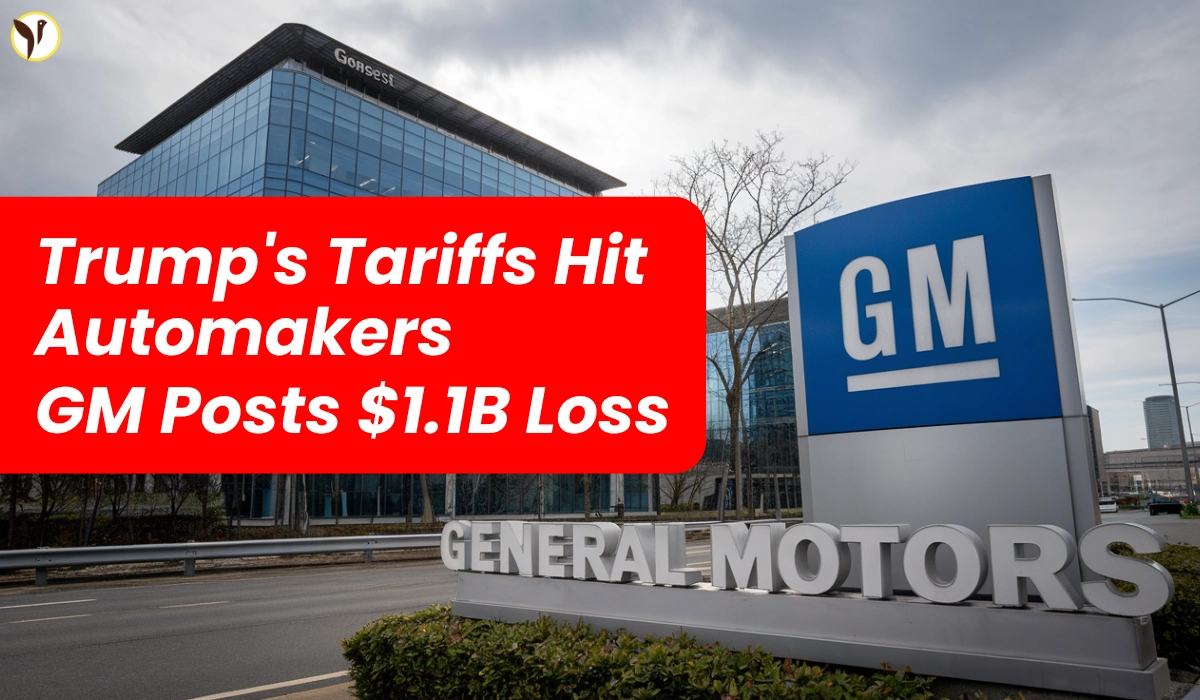General Motors (GM), once praised for spearheading America's EV revolution, reported a staggering loss of $1.1 billion in second-quarter earnings linked to its investment in electric vehicles (EVs). As if this was not bad enough, as GM intensified its transition to EVs, the world's largest issuers of auto recalls and warranties now face an additional uncertainty after former President Donald Trump proposed a 10% universal tariff policy that could upend the global automotive landscape substantially.
Let's take a look at what is happening, how this is impacting GM, and what it means for American workers and car buyers.
Why General Motors Lost $1.1 Billion: Not Just About EVs
GM's billion-dollar hit is a combination of rising costs, shifting market behavior, and internal restructuring. While it may look like an EV problem on the surface, it runs deeper.
- GM is investing heavily in battery plants, EV manufacturing, and new models. While this shift is future-forward, it’s costing the company short-term revenue.
- Electric vehicle sales have come in lower than expected. Consumers are hesitating to make expensive EV purchases as they deal with inflation and high interest rates.
- A contract with the United Auto Workers (UAW) union raised hourly labor costs. This historic agreement raised estimated long term labor costs by $9.3 billion as per company filings.
“We are committed to the electric future, but we have to adjust to market demand. Profitability remains our top priority.”
Key cost drivers:
-
$792 million in labor-related expenses
-
$400+ million in EV production restructuring
-
Lower-than-expected deliveries of key EV models like the Silverado EV
Trump's 10% Tariff Proposal Could Deepen GM’s Challenges
Donald Trump’s plan for a universal 10% tariff on all imports—if he wins the 2024 presidential election—has automakers on edge. While positioned as a protectionist move to strengthen American manufacturing, the auto industry fears a ripple effect.
Why GM and others are worried:
-
Many EV parts are still imported, especially from Mexico and China.
-
A blanket tariff could raise the cost of parts by billions annually.
-
Prices of both EVs and gas-powered vehicles could increase for consumers, slowing down already-fragile sales.
U.S. auto manufacturers like GM, Ford, and Stellantis import major components like:
-
Lithium-ion battery cells
-
Semiconductors
-
Steel and aluminum frames
Even though final assembly may happen in the U.S., a universal import tariff could raise costs across the board.
How Investors Reacted: GM Stock Tumbles
After GM revealed the loss and added commentary on potential policy threats, its stock took a hit.
-
GM stock fell nearly 5.2% in after-hours trading.
-
Analysts from Morgan Stanley called the earnings report “disappointing” and adjusted their 2025 forecast downward.
One user commented on X (formerly Twitter):
Oof, GM getting hammered by those tariffs. @DavidNeomi873 had a point about how this trade war would ripple out. More pain ahead for GM—yikes.
— Sirriye Sener (@SirriyeS32407) July 22, 2025
Biden’s Support for EVs vs. Trump’s Tariff Strategy: A Policy Tug of War
President Joe Biden continues to support EV adoption through tax credits and infrastructure funding. However, if Trump returns to office and imposes broad tariffs, the entire EV market strategy could shift.
Biden administration initiatives:
-
$7,500 tax credit for EV buyers
-
$15 billion allocated for EV chargers nationwide
-
Incentives for domestic battery production
Trump’s policy direction (based on public statements):
-
Push for tariffs on foreign-made vehicles and parts
-
Encourage U.S.-only production
-
Reverse Biden’s climate-focused subsidies
This policy uncertainty is already making boardrooms cautious.
What This Means for American Car Buyers
Car buyers are caught in the middle. If Trump’s tariff plan becomes law and EV costs rise, they may see:
-
Higher sticker prices on both EVs and traditional cars
-
Delays in new model releases
-
Slower rollout of affordable EV options
GM once had a goal of selling 1 million EVs by 2025, but with the EV fall off and pending tariffs, that goal may not be attainable.
Labor Unions Caught in the Crossfire
The UAW played a huge role in raising standards for auto workers, but their demands also increased GM’s expenses.
-
New contracts include:
-
25% wage hike
-
Cost-of-living adjustments
-
Retiree benefits
-
However, with EV production requiring fewer workers than traditional assembly lines, labor unions fear job cuts in the future.
Can GM Recover Before 2026?
While this loss is significant, GM insists it’s part of a longer-term play. They still plan to:
-
Expand EV charging infrastructure
-
Launch cheaper models under $30,000
-
Invest in U.S.-based battery facilities
But they’ll need:
-
Stable trade policy
-
Consumer trust
-
Effective cost control
Analysts agree: The next 12 months are critical for GM’s direction.









